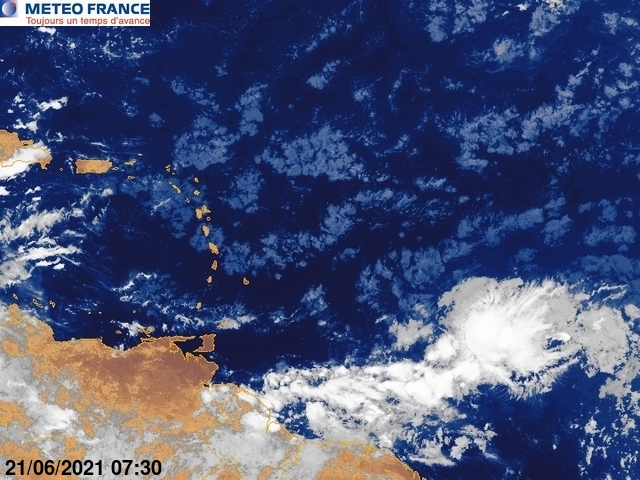Interresting discussion from Crown Weather
Tropical Weather Discussion
Issued: Saturday, August 28, 2010 815 am EDT/715 am CDT
Discussion
Tropical Storm Earl:
Earl is becoming better and better organized this morning and satellite estimates indicates that Earl is a 60 mph tropical storm. Environmental conditions are forecast to be favorable for the next few days and I expect Earl to become a hurricane by late tonight or on Sunday. After that, further strengthening is likely and Earl will reach Category 3 strength by Tuesday morning and possibly Category 4 strength by Wednesday morning.
Earl is tracking due west at a forward speed of 21 mph this morning. A ridge of high pressure located to the north of the storm will keep Earl on a westward track throughout this weekend. By about Monday, Earl is expected to start feeling the weakness that will be left behind by Danielle. This weakness will be gradually weakening, but should still be enough to turn Earl more to the northwest. Now, how far west will Earl track before the next trough of low pressure tracks off of the US East Coast? The GFS model is much further west than the European model. The GFS model forecasts a significant threat to the outer banks of North Carolina late next week. The European model, on the other hand, forecasts a threat to Bermuda around Wednesday. It should be noted that the Canadian model turns Earl due north around 70 or 71 West Longitude; however, it does forecast a hit on Nova Scotia late next week.
My take is that the GFS model may be incorrect as it continues to try to merge 97L and Earl together and this is unrealistic. I am leaning much more closely with a blend between the European model and the Canadian model which would likely mean Earl will turn north at around 69 or 70 West Longitude around the middle part of next week and Earl could come rather close to Nova Scotia late next week. I do not foresee Earl making landfall on the US mainland.
Ok, back to the short term prospects. It is looking more and more likely that Earl will impact the islands of the northeast Caribbean. Those of you in the northern Leeward Islands from about Antigua and points north be prepared for hurricane watches and warnings to be issued sometime today or tonight. Earl is expected to impact the northeast Caribbean from Sunday night into much of Monday. It is not out of the question that Earl does not gain very much latitude before reaching the northeast Caribbean Islands and it is looking more and more likely that the northeast Caribbean Islands will experience a direct hit by Earl. So, all interests in the northeast Caribbean should prepare for hurricane conditions from Sunday night into Monday.
Invest 97-L/Fiona In The Far Eastern Atlantic:
Now for Invest 97-L which will likely become Tropical Depression 8 and then Fiona over the next few days. This system is a broad area of low pressure located about 200 miles southwest of the Cape Verde Islands this morning. Invest 97-L continues to become better organized and I suspect we will see it upgraded to Tropical Depression 8 sometime this weekend. The track model guidance continues to shift further south with each model cycle and I suspect we will see further track model shifts to the south this weekend. As for strengthening, given the favorable environmental conditions, I suspect we will have Tropical Storm Fiona probably late Monday or early Tuesday and then Hurricane Fiona by around Wednesday. In the long range, the GFS and European model differ on the amount of strengthening with the GFS model forecasting a weak system that becomes entrained into the circulation of Earl. As I mentioned earlier, I don’t believe the GFS model’s forecast of this happening and instead I think this system will keep its distance from Earl and develop and intensify. The European model continues to be downright scary in terms of how intense it forecasts this system to become. It forecasts 97L/Fiona to have a central pressure of 941 millibars next Sunday and 934 millibars on Labor Day. This would be equivalent to a Category 4 hurricane.
The forecast track of 97L/Fiona posed by the global model guidance is very worrisome. The European model implies an ultimate strike from eastern North Carolina northward into the Mid-Atlantic States around Labor Day. The Canadian model implies a close brush with the outer banks of North Carolina on Labor Day. Now, it should be noted that the European ensemble models are further south than the operational model and imply a landfall somewhere on the South Carolina coast on Labor Day.
Now, let’s not forget the islands of the northeast Caribbean. This area may also be looking at a very real threat from this system around Wednesday. So, all interests in the islands of the northeast Caribbean should be aware that you may be looking at impacts from two separate tropical cyclones within two or three days.
Let’s look at how the overall weather pattern may setup for next week into the Labor Day weekend. A ridge of high pressure is currently setting up to the south of the Aleutian Islands with a trough of low pressure over the eastern Gulf of Alaska and into western Canada. This in turn forces high pressure to build over southeastern Canada and into the northeastern United States. So, the result may be that 97L/Fiona may be trapped from curving out into the open Atlantic and instead be directed right into the US East Coast during the Labor Day weekend. If I were to make an educated guess, I would say that based on the overall synoptic setup forecast for next week into the Labor Day weekend, the highest risk area for a hit from 97L/Fiona would be from South Carolina northward to Virginia. With that said, this is a very early educated guess and a lot can change. This does have the look of a classic US East Coast threat.
Obviously this potential threat is a long, long ways out, however, this system will be monitored extremely closely and I will keep you all updated. As I mentioned yesterday, don’t cancel your Labor Day weekend plans just yet as this threat is still way, way out there and a lot can change between now and next weekend.
The next tropical weather discussion will be issued sometime on Sunday morning.
Disclaimer: All forecasts herein are made to the best ability of the forecaster. However, due to standard forecasting error, these forecasts cannot be guaranteed. Any action or inaction taken by users of this forecast is the sole responsibility of that user.
Now, let’s not forget the islands of the northeast Caribbean. This area may also be looking at a very real threat from this system around Wednesday. So, all interests in the islands of the northeast Caribbean should be aware that you may be looking at impacts from two separate tropical cyclones within two or three days.
Let’s look at how the overall weather pattern may setup for next week into the Labor Day weekend. A ridge of high pressure is currently setting up to the south of the Aleutian Islands with a trough of low pressure over the eastern Gulf of Alaska and into western Canada. This in turn forces high pressure to build over southeastern Canada and into the northeastern United States. So, the result may be that 97L/Fiona may be trapped from curving out into the open Atlantic and instead be directed right into the US East Coast during the Labor Day weekend. If I were to make an educated guess, I would say that based on the overall synoptic setup forecast for next week into the Labor Day weekend, the highest risk area for a hit from 97L/Fiona would be from South Carolina northward to Virginia. With that said, this is a very early educated guess and a lot can change. This does have the look of a classic US East Coast threat.
Obviously this potential threat is a long, long ways out, however, this system will be monitored extremely closely and I will keep you all updated. As I mentioned yesterday, don’t cancel your Labor Day weekend plans just yet as this threat is still way, way out there and a lot can change between now and next weekend.
The next tropical weather discussion will be issued sometime on Sunday morning.
Disclaimer: All forecasts herein are made to the best ability of the forecaster. However, due to standard forecasting error, these forecasts cannot be guaranteed. Any action or inaction taken by users of this forecast is the sole responsibility of that user.









